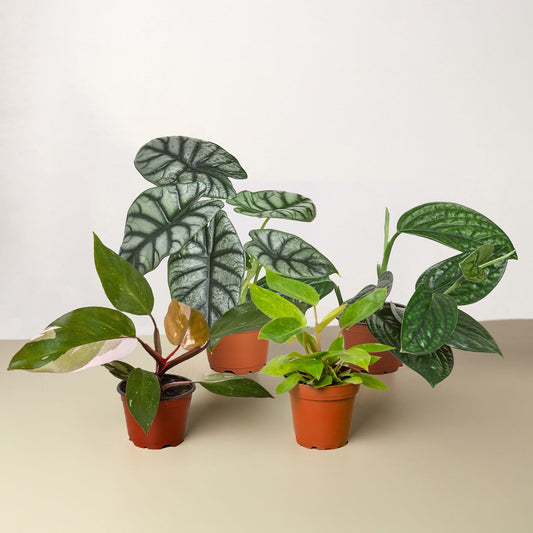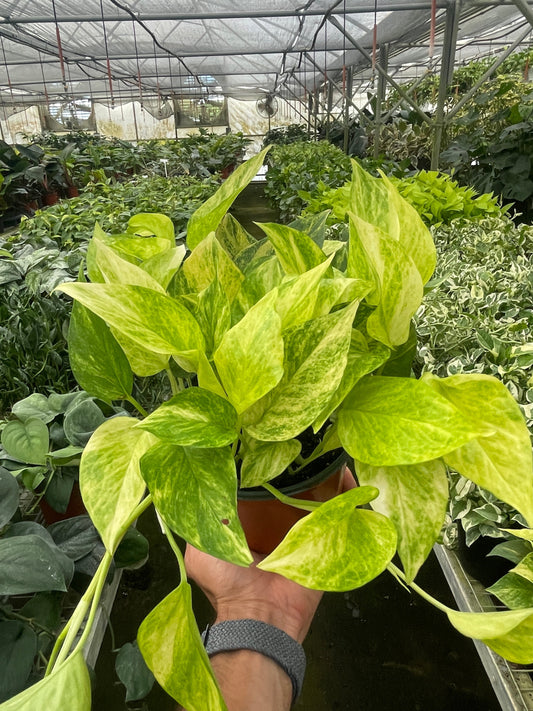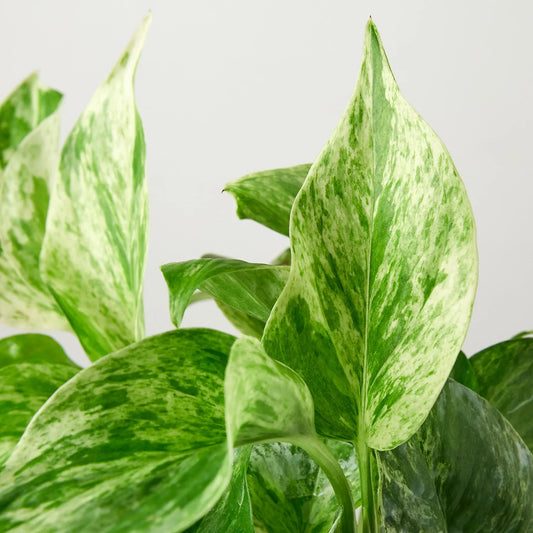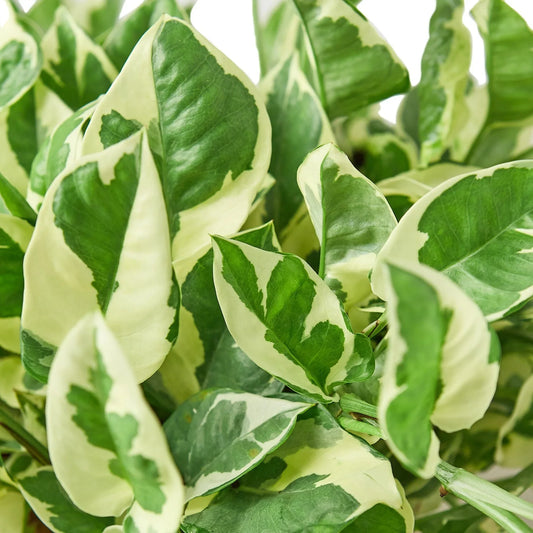How To Fix A Leggy Star Cactus
Cafe Planta Team
Have you ever noticed your star cactus stretching out, looking a bit spindly instead of compact and robust? It's a common issue, and it can be a bit perplexing to figure out what's going on. Don't worry—you're not alone in this, and fixing a leggy star cactus is entirely possible with some simple adjustments.
In this article, we're going to chat about why your star cactus might be getting leggy and what you can do to fix it. We'll explore everything from lighting needs to proper watering techniques, and even how to give your cactus a little makeover. By the end, you'll have the know-how to help your star cactus thrive again.
Understanding Legginess in Star Cacti
First things first, let's talk about what "legginess" actually means when it comes to cacti. A leggy cactus has elongated stems that appear stretched out and thin. This is often accompanied by a pale green color, rather than the vibrant, rich hue you'd expect from a healthy cactus. Essentially, the plant is reaching out for something it's not getting enough of—usually light.
Legginess occurs when a cactus grows in low light conditions, causing it to stretch towards the nearest light source. It's sort of like us trying to reach for a jar on the top shelf—sometimes you just have to stretch a little! While stretching might help you get that jar, for a cactus, it's not ideal as it can weaken the plant and make it more susceptible to damage.
Though lack of light is the most common cause, other factors like improper watering, temperature fluctuations, or even potting issues can contribute to legginess. Understanding the underlying reasons can help you tackle the problem more effectively. So, let's dig a bit deeper into these aspects.
Light: The Key Ingredient
If we had to single out the most pivotal factor in preventing a leggy star cactus, it would be light. Cacti are sun-loving plants that thrive in bright, direct sunlight. However, not every home is blessed with ample natural light, especially during the winter months.
Your star cactus should ideally be placed in a spot where it can receive several hours of direct sunlight each day. A south-facing window is often the best choice. If natural light is scarce, consider supplementing with grow lights, especially if you live in an area with long, dark winters.
Signs Your Cactus Needs More Light
- Elongated, pale growth that's thinner than usual.
- The cactus is bending or leaning towards a light source.
- Slower growth than expected, even during the growing season.
To address light deficiency, gradually acclimate your cactus to brighter conditions. Sudden exposure to intense light can cause sunburn, so a slow transition is key. You might start by placing it in a slightly brighter spot, then move it to a sunny window after a few weeks.
Watering Wisely
Watering is another critical element in cactus care. Overwatering is often more detrimental than underwatering, particularly for cacti. A leggy cactus might be a sign that it's not just thirsting for light but also getting too much water.
Cacti store water in their tissues, allowing them to survive long periods of drought. In a home environment, they don't need frequent watering. During the growing season (spring and summer), watering every 2-3 weeks is usually sufficient. In the dormant months (fall and winter), you might water as little as once a month.
How to Water Properly
- Ensure the pot has drainage holes to prevent water from pooling at the bottom.
- Allow the soil to dry out completely between waterings.
- Use room temperature water to avoid shocking the plant's roots.
- Water the soil directly, avoiding the plant body to prevent rot.
Remember, it's easier to revive an underwatered cactus than one that's been overwatered, so err on the side of caution.
Temperature and Humidity Considerations
Cacti are native to arid environments, so they prefer warmer temperatures and low humidity. A star cactus that's too cold or exposed to fluctuating temperatures can become stressed, leading to leggy growth.
During the day, aim for temperatures between 65-80°F (18-27°C). Nighttime temperatures can dip slightly, but avoid dropping below 50°F (10°C). Also, keep your cactus away from drafty windows or heating vents where temperature changes are more dramatic.
In terms of humidity, the average indoor environment is usually just fine for cacti. However, if your home is particularly humid, consider placing your cactus in a drier room or using a dehumidifier. Maintaining stable conditions helps keep your cactus healthy and less prone to stretching.
Potting: Choosing the Right Container and Soil
The pot and soil you choose for your star cactus play a significant role in its overall health and appearance. A leggy cactus might be signaling that it's time for a repotting session or a change in soil composition.
Choosing the Right Pot
- Select a pot with drainage holes to prevent root rot.
- Use a pot that's slightly larger than the current one, allowing for growth but not so large that it retains too much moisture.
- Consider using a terracotta pot, which allows for better air circulation and moisture evaporation.
Soil Considerations
- Use a cactus or succulent-specific potting mix, which provides excellent drainage.
- Avoid heavy, moisture-retentive soils that can lead to root rot.
- If you're mixing your own soil, combine 1 part potting soil, 1 part sand, and 1 part perlite or pumice.
Repotting your cactus into a well-draining soil can make a significant difference in its growth and appearance. If your cactus has been in the same pot for several years, it might be time for a refresh.
Pruning and Reshaping
Once you've addressed the environmental factors, it's time to give your star cactus a little TLC with some pruning. Pruning helps remove the elongated, weak parts and encourages the plant to grow more compactly.
Before you start snipping away, make sure to use clean, sharp scissors or pruning shears. This prevents any potential spread of disease and ensures a clean cut.
Steps for Pruning
- Identify the leggy sections that need trimming. These are usually at the top or sides of the plant.
- Cut above a node (a joint in the plant) to encourage new growth.
- Remove any dead or damaged parts of the plant as well.
- After pruning, let the cuts heal for a few days before watering to prevent rot.
Pruning not only improves the appearance of your cactus but also promotes healthier, more vigorous growth in the future.
Fertilizing for Growth
Fertilizing might not be the first thing that comes to mind when caring for a cactus, but a little plant food can go a long way in supporting healthy growth. Cacti don't require much, but occasional feeding during the growing season can help maintain their vibrancy and prevent legginess.
Use a balanced, water-soluble fertilizer diluted to half strength. Apply it once every month during the spring and summer months. Avoid fertilizing in the fall and winter, as this is the cactus's rest period, and extra nutrients can do more harm than good.
Signs of Nutrient Deficiency
- Yellowing or pale growth.
- Stunted growth despite adequate light and water.
- General lack of vigor or resilience.
Be cautious not to over-fertilize, as this can lead to salt build-up in the soil, which can damage the roots. A little goes a long way with cacti!
Dealing with Pests and Diseases
No one likes to think about their beloved plants being attacked, but pests and diseases can sometimes be the culprits behind a leggy cactus. Common pests like mealybugs or spider mites can drain your cactus of its vitality, while diseases like root rot can weaken its structure.
Common Pests and How to Tackle Them
- Mealybugs: These little white insects can be wiped away with a cotton swab dipped in rubbing alcohol.
- Spider Mites: Often found on the undersides of leaves, these can be sprayed with a mixture of water and dish soap.
- Scale Insects: Scrape them off gently with a soft brush or use horticultural oil.
For diseases like root rot, the best defense is prevention. Ensure your cactus is planted in well-draining soil and avoid overwatering. If you suspect root rot, remove the plant from its pot, trim away the affected roots, and repot in fresh soil.
Creating a Cactus-Friendly Environment
Finally, consider the overall environment you're creating for your star cactus. Factors like air circulation, placement, and even companionship with other plants can influence its health.
Ensure there's adequate airflow around your cactus to prevent stagnant, damp conditions. Grouping your cactus with other sun-loving plants can create a micro-environment that's beneficial for growth. Just be mindful of overcrowding, which can lead to competition for light and water.
If you have pets or small children, ensure your cactus is placed somewhere safe, as those spines can be a bit prickly. A shelf or plant stand might be a good option.
By considering these aspects, you're not just fixing a leggy cactus but also setting the stage for a thriving, happy plant in the long run.
Final Thoughts
Fixing a leggy star cactus involves a mix of environmental adjustments and a bit of hands-on care. By focusing on light, water, potting, and occasional pruning, you can transform your cactus back to its healthy state. Remember, patience is key, and your efforts will pay off in time.
If you're looking for more ways to care for your plants, or perhaps you need a few new additions to your collection, check out Cafe Planta. We offer a wide variety of houseplants, care accessories, and even plant-themed apparel. If you have any questions, feel free to email us, or drop us a message on Instagram. We believe plants bring us closer to nature and each other, and we're here to help you create a beautiful, thriving plant collection in your home.



















